Tavarnelle – Tuscany’s Hidden Secret
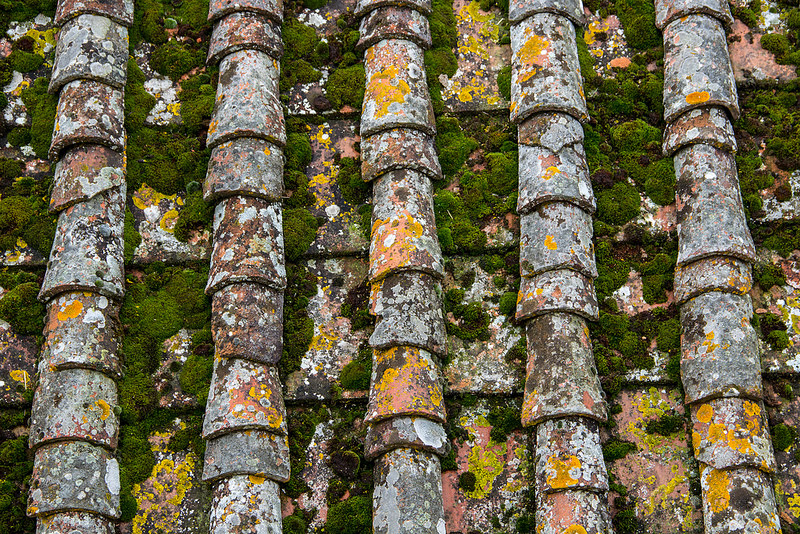
For those with a sense of adventure and a lust for discovery there are bountiful wonders to be enjoyed beyond Florence’s historic old city. It starts with a southerly trip down Via del Serragli to the massive wooden gates of the Porta Romana. This, the old gate to Rome, serves as a modern day portal between the bustling streets of Firenze and the Tuscan countryside. As we set out to explore, accompanied by a group of local representatives from the Tavarnelle Tourism Board, our goal for the next three days was simple – to discover and wander the often overlooked wonders, tranquil beauty, rich history, and succulent flavors of the Chianti countryside. Our destination was the commune of Tavarnelle Val di Pesa, which falls under the Province of Florence due to its close geographic proximity.
While Tavarnelle can be explored by way of a day trip or two from Florence using a car, a far better option is to stay in one of the area’s plethora of beautiful accommodation options which include everything from fantastic B&Bs with amazing facilities such as Del Giglio, where I was put up, to the epitome of high-end luxury at 5-star hotels such as the Castello del Nero with its old-world elegance, spa, and stunning vistas. The region is also dotted with spectacular agriturismos which offer accommodation, mouth watering locally sourced foods, and a wealth of Chianti wines that will leave your toes curling in pleasure.
The area’s historic sights include beautiful country-side churches, quirky museums, and a mixture of highly authentic must-see sights and experiences with none of the crowds or polished tourist spectacle that so often undermines the richness of the experience in more highly trafficked areas. The trade off? Hours can be quite limited or visits at times are done by appointment only. One good way to get an idea of what is going on in the area is through the commune’s official Facebook page – Tavarnelle, Chianti da Vivere. In this hulking beast of a post (it’s roughly 6,233 words) I’ve broken up my visit to Tavarnelle into different categories. These include Food & Wine, History & Art, the Stars and the Landscape. If you’re in a rush, skip to the section that most speaks to you or watch the video embeded at the very end. Don’t forget to see the complete photo album on flickr.
The History & Art
As our vehicle rolled into the nearly deserted parking lot in front of a small church I was unsure what to expect. The Pieve di San Pietro in Bossolo is a Romanesque church whose history dates back to roughly 990 AD. The church’s age shows in its eclectic mixture of architectural styles and charming simplicity. Situated overlooking a grove of olive trees with a view out over the rolling Tuscan hills, the church’s beauty is showcased in a way that would be completely lost were it sandwiched into a city somewhere, overwhelmed by less elegant buildings. The complex serves as home to the main church with its large bell tower, a lovely inner cloister, and a rectory which now serves as home to the Museum of Sacred Art.
The inner cloister is cozy with a large water well in the center, greenery, and a series of ancient bells lining the side of one of the paths. These bells, some of which are extremely old, are easy to overlook but a fascinating opportunity to glimpse back in time and to enjoy the detailed craftsmanship of the region’s bell makers throughout history. Inside the church visitors can find the church’s fonte battesimale monolitico – a massive six-sided baptismal font which currently rests on several large pillars.
While the Pieve di San Pietro in Bossolo was charming, the real surprise was the Museum of Sacred Art. This small local museum holds a collection of historic works which would comfortably fit in any of the country’s most famous museums. Despite this, I’m really glad they haven’t been spirited off to the Uffizi. The local environment and the medium-size of the collection makes it very easy to enjoy each individual piece more completely without feeling overwhelmed or glazed over. In addition to several beautifully written historic religious texts, the museum includes artwork that dates back to as early as 1270 AD. The collection contains works by Meliore, Lorenzo di Bicci, Rossello di Jacopo Franchi, Neri di Bicci, Ugolino di Nerio, Giovanni Montini and others. The museum also includes a number of less-traditional local artifacts including beautiful hand-crafted Tavarnelle lacework which is famous for inspiring, of all things, shoes by Salvatore Ferragamo. It also contains a very cool wooden bike which I have no doubt would leave the Danes here in Copenhagen green with envy.
Another of the area’s interesting structures is the Chapel of Saint Michael the Archangel. This small chapel is interesting for two reasons. The first is that it sits on the historic site once occupied by the town of Semifonte. The town, after resisting the Florentines in the early 1200s, was completely razed with an edict passed that forever prohibited the re-construction of a city on the spot. The second is that the chapel is designed as an exact copy done at 1/5 (or 1/8th I can’t recall) scale of Brunelleschi’s famous dome inside Florence’s Duomo, the Santa Maria di Fiore Cathedral. The acoustics in this tiny stand alone chapel are incredible and should you dare to hum a small tune will send goosebumps down your spine and leave the hairs on your arms tingling. The prohibition on re-constructing Semifonte also means that the area immediately surrounding the chapel is a perfect example of Chianti’s rolling vineyard covered hills.
Situated nearby, the Pieve di Sant’Appiano in Val D’Elsa is an ancient church which shows the scars inflicted by numerous earthquakes. This, combined with the church’s history which likely dates to well before 900 AD has resulted in a structure that has evolved over time in a highly unique fashion. One example of this is the interior, where one side consists of round columns while the other is supported by rather crude square pillars. The church dates back to the Roman era and was originally designed in a Romanesque style. The structure holds an absolutely gorgeous miniature cloister which was overflowing with blooming flowers and small, well-cared for, trees while we were there. The museum/antiquarium is situated in one of the Church’s buildings and possesses a mixture of historic artifacts, including several Etruscan works and funeral stones which were discovered in the area surrounding the church. It also contains historic insights into the region, the church, and a collection of interesting survey photographs.
While not as historical as the museums and churches we visited, one of the most surprising stops during our tour was at L’Argento Firenze. A traditional hand crafted silver smith that has been creating beautiful silver and enamel pieces for decades. On initial arrival my level of disinterest was probably palpable. Jewelry isn’t exactly my thing and while I might have some interest in a blacksmith shop hammering away on red-hot steel, the thought of silver smiths forging rings and bobbles didn’t jump out at me as a fun way to spend an hour or two. Of course, as with so many things, I was positively surprised.
The folks at L’Argento Firenze are craftsmen and women. Their work is art and it is a very detailed art with a fascinating process. As they opened their workshop to us and welcomed us in, explaining what they make, how they make it, and the specifics of working with silver I found myself increasingly enraptured.
Watching as they took the raw silver ingots from a base state and worked them gradually into jewelry, artwork, cups, plates, and any number of other creative pieces I found myself with the same deep respect that comes with watching a master-painter work. There is also something mesmerizing about seeing a silversmith mold and shape hardened silver on a large metal lathe. The way the metal bends, folds, spirals and looks almost as if it is little more than soft clay in their hands is a form of primitive magic that still delights the senses in a way even the biggest blockbuster cannot.
Of the moments spent in the shop, one of my favorites was watching one of the oldest employees – a gentlemen well into his 80s – teach the son of one of the owner’s how to paint enamel onto a small silver piece he was working on. Despite being hunched over with age and possessing the hands of a life-long craftsman, he was still able to paint delicate shapes with a precision that even my young hands would struggle with. The site of him, working closely and sharing his life-long craft and art with the young boy, was a reminder of how those types of interactions have become far too rare in today’s society. It also brought back memories of time spent with my grandfather as a child. While I don’t know if they offer public tours, if you get the chance to stop in and see how they do what they do, I recommend it. Even if, like me, the thought of a silver smith doesn’t initially sound enthralling.
The Stars
I am a huge space geek. As in, when I was a kid, one of my favorite memories was the week I spent at Space Camp in Huntsville, Alabama. So, when I was told we’d have the opportunity to visit the local observatory for a look at Jupiter and the night sky, I was quite excited. Our destination for the evening was the Osservatorio Polifunzionale del Chianti’ which is a multi-focus scientific research area which does environmental, seismic, and astronomical observation. The astronomical observatory is quite new, and was built initially to serve as the home to a large telescope which was previously housed at the University in Florence. As Florence grew the pollution (chemical and light) effectively rendered the telescope useless. To solve the problem this new facility was constructed. Unfortunately, the primary telescope was undergoing cleaning and repair, but a smaller secondary one was available for our viewing delight.
After a lovely snack in the common area, surrounded by local artwork and sculptures we were given an introduction to the observatory’s small museum. There we got a crash course in the role Italians have played astronomical research over the years. In particular, I found two of the items captivating. The first was a copy of Galileo’s Jovilabe. The Jovilabe was created by Galileo, who was studying Jupiter at the time, to better predict its location and the location of the planet’s satellites (moons) automatically. A beautiful brass instrument, only some of the inscriptions are understood by modern-day scientists – which is pretty crazy to think about.
The museum also had a re-production of Galileo’s revolutionary telescope on hand. I’ve always pictured the telescope he used as being a tripod mounted brass concoction that looked more or less like what we use today. Instead, I was shocked to learn that his telescope was a handheld assembly that looked much more like a balancing stick or extremely long toilet paper roll stuffed with lenses than what I thought an early telescope might look like. It is staggering to think of the long hours he spent staring through his telescope, monitoring far off Jupiter and its moons, all through this ground breaking but still fundamentally simple creation.
We then then ascended the small set of stairs to the observation deck and settled in around the telescope. The lights went off, and then the entire dome began to rotate with a dull hum. As it did, our host flipped a switch and the viewing slit in the dome slowly retracted revealing in its wake the bright colors of the milky way and the wild beauty of trillions of stars. The sensation was similar to that of the curtains opening at the start of a great play. Once properly adjusted, we each took turns viewing Jupiter and its moons before turning the telescope a bit closer to home for a spectacular view of the Moon. The image is, of course, not as wildly detailed as what you can find in photos taken from spacecraft or the Hubble. Yet, there is an authenticity to the image, a glow, and the knowledge that it is real and there in the moment which is very unique and moving. This sensation was much the same as how you can see a photo of a Lion, or even a Lion in a zoo, but it is only when you’ve seen a Lion in the wild that you truly realize what magnificent animals they are.
The observatory is currently fundraising for a new, state of the art, telescope. One which would be radically more powerful than the one we used. I cannot wait to re-visit once they’ve obtained it.
The Food, Wine, & Chianti Charm
The highlight and a central focus of any trip to Tuscany is often and must absolutely be the food and wine.
So, first things first, what’s the scoop with the area’s wines? The majority of the wine from the Tavarnelle area consists of Chianti wines. These Chianti wines are required to contain wine made from no less than 80% Sangiovese grapes. The remaining 20% can consist of Sangiovese grapes or other grapes grown in the region. These often include Cabernet Sauvignon, Merlot, or Canaiolo grapes. If the Chianti is aged at least three years it can qualify for the title of Chianti Riserva which serves as a further level of distinction. While these basic qualifications shape a foundational level for what to expect from Chianti wines, the reality is that the range of tastes is significantly more complex with each vineyard producing quite different wines. The one commonality most share is that they are absolutely delicious.
Cantina Antinori
Our first stop was the Cantina Antinori. This structure was completed in 2013 and is a highly unusual architectural marvel buried somewhat inconspicuously in the side of a hill. Created for the extremely powerful Antinori family to serve as a wine cellar, museum, visitor’s center, and tribute to their family heritage, the complex is a strange blend between ultra-futuristic, rustic, and strangely historic design elements. With an abundant reliance on the earthy copper tones of rusted steel and intentionally crude welding the complex feels a bit like an other-worldly military base from a 1970s (or 1930s for that matter) scifi-drama. They’ve built the entire facility into the hillside and re-covered the majority of it with freshly planted vineyards. The result looks a bit like a massive pillbox sunken into the side of the hill.
The cellars range in size, but all continue the other-worldly and highly unusual visual style laid out by the Archea Associati architectural studio. The facility is both spacious and modern while seeming cozy and historic. The blend is a strange one and even now something I’m still not sure how I feel about. This strange blend of the new and old was made even more interesting by some of the historic artifacts the family has on display. These include an original family tree that is hundreds of years old and depicts the Antinori’s distinguished history as well as a massive multi-story wine press which was designed by Leonardo da Vinci.
After a tour of the facility, including the area where they also make several types of olive oil, we settled into the restaurant for a lite lunch and wine tasting. The Antinori family has been making wine for more than 600 years, so we were extremely excited to see what they had for us to taste. These included three wines. The first two were reds and consisted of a Chianti Classico and a Chianti Reserva. The third was a white Villa Antinori Toscana. The Toscana is a blend of predominantly Trebbiano and Malvasia grapes (50%) combined with slightly less Pinto Bianc and Pinot Grigio (35%). The blend is topped off with Rhine Riesling which makes up the final 15%.
The wine was served with a traditional Tuscan offering which included local cheeses, breads, olives and wild boar. I’m always fascinated by how different the local olive oils taste from producer to producer. The oil we enjoyed with our meal was an Antinori press and held a very dark rich green color with a strong flavor and slight bite to it. It, when paired with a smudge of salt, was full of flavor that permeated your mouth and held its own against the flavor of the bread.

This was accompanied by two types of Bruschetta. The first of which was an olive and liver pate with a delicate blend and light texture that had a healthily balanced olive and liver flavor. The second was a sun-dried tomato spread which was richly flavored and tasted much as one would expect.
Badia a Passignano Abbey & Vineyard
This beautiful hilltop abbey is an ancient monastery that has kept vigil over the surrounding fields, vineyards, and forests for at least 1,000 years. The Badia a Passignano has evolved significantly over its lifetime, with the most recent changes having been made in the late 1800s when a private owner added two towers and a more medieval look to the facility.
Despite the relatively new additions to make the structure look more historic, and a jaunt in the 15th century as a fortified villa for one of the dei Medicis, the building remains true to its roots and has been taken back over by the Vallombrosian Monks who built the initial monastery nearly 1,000 years ago.
While the monks retain ownership of the monastery, they have entered into an unusual deal with with Antinori family which grants the Antinori’s usage and control over all of the surrounding vineyards. In so doing the monks are able to preserve their ownership of the monastery despite significantly increasing land values in the area, while the Antinori’s gain access to highly desirable vineyards in one of the oldest parts of the Chianti region. They also operate a high-end fine dining restaurant which rests immediately next to the Monastery.
The monastery sits atop a warren of wine cellars which are packed to the brim with hulking wooden casks full of Antinori wine. With the rich smell of new and old oak hanging heavily in the air and blending with the mild musk of wine mold, fermenting grapes, and the earth each room within the cellars had a decidedly different look and feel. This came largely because over the years the cellars have been expanded to make room for increasing demand and to accommodate improvements in technology. This was particularly visible in one of the rooms where two massive concrete fermentation tanks from the 1900s were built into a wall.
There is something deeply charming about walking through an old wine cellar that is still in active use. Beyond the smell and feel to it, it has the aura of walking through history. Though some new technologies have been added, the wine cellars themselves, particularly in these older structures, still make it possible to imagine how very similar the process and look might have been several hundred years ago.
The monastery is well worth a visit for more than just the wine. The compound is absolutely gorgeous, has a beautiful traditional garden with manicured shrubs, is home to several rather intense looking cats, and the Church of San Michele which rests within the complex contains a series of moving religious frescoes and stands as a tribute to the powerful role the monastery has played in the region’s history.
Fattoria Montecchio
This “farm” has historic and powerful roots with a long and rich history that stretches back to times before even the most aged and gnarled olive trees can remember. Today it offers up a highly unusual blend of experiences and services. The old farmhouse’s yard is home to carefully manicured Cyprus hedges which are at least a story high and look more like castle walls carved from a living forest than hedges.
The villa complex has the type of charm we’ve come to expect and envision when the word Tuscany comes to mind. There are fountains, lemon trees, vine covered buildings, and the distinctly Tuscan hues used to decorate the region’s buildings. The views from the back porch look out over a blend of carefully manicured vineyards and olive groves which are periodically dotted by caretaker’s huts – old stone buildings with terracotta tiles on the roof which ooze the allure of a cozy fire and romantic evening spent with a loved one.
As our host showed us the premises the topic of the large terracotta jars used to hold plants came up. With a sparkle in his eye, he explained that before switching to wood his ancestors and the early Romans had used terracotta jars to store and age wine. As part of their operation at Fattoria di Montecchio they have a fairly extensive terracotta business where they make a wide assortment of large and small pieces. Before we knew it, we had been spirited down to a yard overflowing with beautiful earthen statues, human-sized jars, and a wide assortment of naturally colored and painted tiles. We were introduced to how they make the terracotta pieces, which I found particularly fascinating due to the incredible size of the jars. We also had the chance to see their massive kiln, which can hold several tons and was the size of a small semi-trailer.
As we made our way back into the main structure for a tour of the wine cellar, which included several amazing rooms with dust and spiderweb covered wine-racks sporting bottles of wine that dated back to before my birth, our host explained that they had just kicked off an experiment. In addition to their normal Chianti Classico, Riserva, and olive oil production they were experimenting with creating wines in the traditional fashion using the earthen terracotta jars instead of wooden casks. Would it work? He had no idea, but if you have the opportunity to stop by in the future, let’s keep our fingers crossed that the experiment is a success and yields the opportunity to sample Chianti wines with a distinctly Romanesque twist.
Lunch was served in typical agriturismo fashion with fresh meats/prosciutto, brochette, and delicious olive oil from the local olive groves. We enjoyed the meal in Montecchio’s dining hall which had a traditional and historic feel to it that oozed 19th century hunting lodge combined with countryside retreat. The walls were covered by numerous oil paintings depicting the hunt, food, and game while the room was decorated with antique chairs, wooden pieces, and vintage lamps. While perhaps a bit garish for some vegetarians, the overall feel and delivery was one that blended historic tradition, museum, and country-elegance in a comfortable and cozy fashion.
In total we sampled three of Montecchio’s regular wines as well as their Vin Santo. Both their Classico and Riserva were delicious. The Riserva in particular was one of my favorites with a pleasant balance and dry sweetness that I found extremely appealing. The biggest surprise though was their Pontentino which was fresh, well balanced, and delightfully sweet without being over the top.
We ended our meal with a glass of Montecchio’s Vin Santo del Chiatni Classico. For those unfamiliar, Vin Santo is a super sweet and particularly strong dessert wine which likely originated in the Tuscan region. There can be hints of raisin, with a light cinnamon flavor, combined with the bite of a dry wine and it is typically between 11-20% alcohol. It is best enjoyed with biscotti or similar cookies.
Il Paganello
It’s hard to say why in particular, but this was my favorite of the farm/agriturismos we visited. Il Paganello is a 16th century villa that rests atop a hillside with a view out over one of the most picture perfect vineyards I saw during my time in the Chianti region. A vista made that much better by the backdrop of a small church complete with a row of cypress trees on the hill opposite the villa and a blooming cherry tree situated in the midst of the orderly rows of grape vines. The owners are vibrant welcoming people and had set up lunch in the main courtyard.
The courtyard had a low-wall and protected area which ensured that wind wasn’t an issue while providing an unobstructed view. The building’s walls were painted in the bright yellows and earthy oranges that define Tuscany and lined with brightly colored local artwork.
Our meal was purely vegetarian. Something that ordinarily gives me pause. Especially somewhere like Tuscany where I’m usually eager to be trying the local meats. I need not have worried. The mixture of veggies was spectacular and even the friend items – things like whole artichokes and squash blossoms – were cooked in a light batter that was fresh and clean tasting. The salad was a typical salad served with fresh Il Paganello olive oil and balsamic vinegar, while the mixed grain dish used a traditional Italian grain that was perfectly flavored and I just couldn’t get enough of. All was served with fresh bread and ample olive oil.
Dessert was a properly ripened bowl of fruit that embodied the flavor and freshness which defined the Il paganello experience. All of which was accompanied by a series of Il Paganello wines.
Of the wines we sampled, my favorite actually wasn’t one of the Chianti Classicos. Instead it was a special Tuscan red that they produce on site and call the Quanta Cura. The 2009 Quanta Cura is a blend of Merlot and Colorino grapes. Our host explained that the Colorino grapes, which produce a deep ruby red wine, are an old Tuscan variety that is normally used more for coloration than flavor. I absolutely loved the blend which had a rich taste without being excessively sweet or dry. In a comical twist, it turns out that they export almost their entire stock to a vendor who, go figure, is based here in Denmark.
This is in no way to say that the other wines – the Chianti Classico, Riserva and Superior were not excellent – they most definitely were – rather just that the Quanta Cura stood out as something different from what we had been tasting. The Il Paganello wines were extremely enjoyable and fit the ambiance and experience perfectly. We wrapped things up with another couple of glasses of an incredible Vin Santo while enjoying the Tuscan sun and struggling to avoid finding a chair, curling up, and settling in for the remainder of the summer. After a tour of the grounds and the absolutely gorgeous guest rooms, which looked straight out of a 16th century fairy tale, we were off once again to continue our exploration of the region.
Home Made Pasta
In general I’m not the world’s greatest cook. There are a few things I can manage, almost all of which are cooked in a frying pan and involve some variation of meat, potatoes or beans. One of my greatest culinary disasters actually included attempting to add sliced banana to a beef stew. You can imagine how that turned out. As a non-dairy eater, I’m also usually fairly apathetic about pasta since my favorite part, the sauces, are usually off limits. So, I wasn’t quite sure what to expect, or just how disastrous my stab at making pasta from scratch was going going to turn out. During our visit, one of our evening meals was a home-cooked pasta dinner assembled from scratch at Podere Torricella under the watchful eyes (and ferocious spoon) of our chief chef, Wilma.
It all started out simple enough. Crack a couple of eggs, make a reservoir, add some water and blend blend blend. Pause. Look at Wilma. Then, blend blend blend even more. Eventually I started to craft a large yellow dough ball that left me feeling more like I was making a pizza than pasta.
As I worked away diligently pounding my mound of dough to a thoroughly blended pulp the others were hard at work slicing, dicing, and skinning a wide assortment of gorgeous fresh vegetables which included everything from tomatoes and bell peppers to eggplant and zucchini blossoms.
These veggies (and sausages) would later go into a pan where they were cooked into a delicious soup and flavorful sauces. As these veggies simmered away, Wilma also prepared a basic mixture of spinach and ricotta to use as a stuffing for the massive tortellini we were about to transform my now thoroughly blended and abused ball of dough into.
With a few twists of the knob that set how thick the flattened pasta would be, we rolled out large pieces of dough and then started feeding them through a beautiful table-mounted pasta roller. Once. Twice. Thrice. We fed the pasta through, folded it over, and then sent it back through again. This further ensured that everything was the right texture and properly blended. It also gave us large pieces of dough that were ready to be transformed either into tortellini, or tagliatelle.
The tagliatelle was fairly straight forward to make. After inspecting our dough, which now looked a bit like trimmed pizzas, Wilma produced a wooden box with a slanted bottom that looked as much like a home-made musical instrument as a cooking utensil. With a flourish of her fingers she covered it in flower, and then laid the first piece of dough over the taught wires. Through a series of quick movements which drew a rolling pin back and forth the dough was pressed down atop the wires, which in turn sliced it into orderly pieces of pasta. Of course, as we tired it, it turned out that while still simple, there was a definite art to selecting the right piece of dough, getting it to blend through the wires quickly, and to separate properly instead of getting stuck clinging to the wires and in turn making a gnarled mess of things. The process was fun, a bit energetic, and led to rounds of laughter as we all gave it a go with varying degrees of success.
The tortellini on the other hand were much more of an art form. We started by cutting small squares out of the pressed dough. Then, with care, plopped a spoonful of ricotta down slightly off center. The next step was to carefully paint around the edge of the ricotta with a paintbrush dipped in water. Wetting the dough in this fashion allowed it to stick when we folded the square into a triangle, producing the first part of the traditional tortellini shape. Then, with a special rolling cutter, we cut away the excess edges which also produced the signature zig-zag pattern along the tortellini’s outside. That led to the most delicate part – we’d ever so carefully add a dab of water to the two back tips of the triangle and then with a twist, draw them back before pinching them together and pinning our creation into place. All this had to be done without bursting the part enclosing the ricotta.
While both types of pasta were delicious, I think that flavor was made that much more potent and dramatic due to the time and energy we had invested in assembling it. It was accompanied by a Ribollita soup, which is a robust Tuscan vegetable soup that I devoured, making sure to soak up every last drop with piece after piece of delicious bread. In place of the typical wine sampling we had done during previous meals, we accompanied the meal with a lovely red produced by one of the local families. Organic and free of sulfates, the wine was not only locally sourced but produced in fairly small volumes with an abundance of love and care.
The Landscape
Tavarnelle, Barberino Val D’elsa, Sambuca, and San Donato In Poggio – these are some of the small towns we spent our time exploring. They were rich with history, culture, character and all offered an over abundance of charm. The tiny roads that wind between them offer inspiring views of vineyards, olive groves, cypress trees, and rolling grass fields while the air is laden with the crisp freshness of nature.
Even though it hadn’t yet entered peak tourist season when I arrived in nearby Florence the city was overwhelmed by visitors. Key attractions had long lines, and the streets were so packed with people that the unwary soon found themselves bouncing off of stranger’s shoulder after stranger’s shoulder. While this has its perks (few and far between in my opinion), it made photographing the city difficult and detracted significantly from enjoying just how beautiful Florence is.
The quiet and peaceful nature of the Tavarnelle region stood out in stark contrast to the noise and chaos of Florence. The streets were nearly empty of tourists and the ambient sound of the small towns was just that – the sound of a small Italian town – not the dull roar or thousands of tourist voices colliding together in a blend of dozens of different languages shouted by tour guides with an upraised umbrella and small army of ant-like travelers marching in succession 2 x 2 one step behind.
No matter how many times I experience the contrast, and re-learn the lesson it still shocks me just how much people miss out by only focusing on the most polished and famous of tourist destinations. Which isn’t to say that seeing central Florence isn’t an absolute must for everyone. Rather, that as people waste hours upon hours in line to see a few select attractions, there is an amazing world full of authentic Tuscan experiences less than 30 minutes outside the city.
As people glance across wine lists checking labels and drinking wines they could easily find back at home, a brief trip outside the city’s core provides the perfect opportunity to not only go to the wine’s point of origin, but to do so at a cost that is much less or at worst about the same as what they’re already paying while enjoying little of the experience or richness that is so readily on hand nearby.
There are of course some challenges. The Tuscany we’ve come to expect and envision is there, but it is not everywhere. Even in the small cities there are often cars which ruin otherwise perfect views of ancient sagging buildings and worn cobblestone streets. Power lines dot the countryside and often mar what should be the most elegant of rolling vineyard covered hills. In other places new construction and the casual delinquency of modern architecture has sprung up like graffiti on a beautiful work of art.
Still, despite these challenges, the moments where the mark of modernity has yet to blemish the landscape are plentiful. There are ample reminders of the past – some in the form of urban decay – while others take more subtle but more dramatic form. In small roadside towns the scars of World War II are still visible with holes from machine gun fire and damage from grenades carving divots out of old stone and brick facades. These tragic reminds of our violent past also serve to amplify the beauty of other reminders of Italy’s ancient history. The pillars of an old church, the gnarled roots of an ancient olive tree, these are the strokes which paint this region of Italy and give it depth and character.
The countryside is also awash in textures and patterns. It’s more than just the beautiful and ever-so carefully maintained lines of the vineyards. It is the twists and turns visible in the veins of marble columns, the strange patchwork of colors and textures in old bricks, the orderly chaos of cobblestones, the slithering ebb and flow of the wind as it sails its way atop fields of poppies and straw. These, and a hundred other small visual treats are there for those who take the time to pause and observe the soul of Chianti.
It is, if the time of year is right, also a place of color and flowers. The Italians take great pride in their gardens and even those confined to a small balcony and apartment will often decorate that balcony with herbs, spices, and vibrantly colored flowers. These miniature roses, each with a perfect bloom, decorated the back yard at the Del Giglio B&B where I stayed during my visit and, as with the rest of the gardens in town, serve as an interesting and oft-overlooked insight into the care, investment, and pride Italians take in their towns and homes. They are still much more invested in creating a home which is friendly, open, welcoming, and in tune with nature than, I suspect, many other cultures.
What is Tuscany? It is a large region that shares many common traits but also has many hidden wonders. While it is starting to get discovered, Tavarnelle is definitely one of those hidden gems. If you find yourself in Florence and tiring of the crowds, set aside some time to explore beyond the winding streets and high-rises of the big city. Set your feet (or tires) upon the path south towards the Porta Romana and do as so many others have over the last 2,000 years. Head south and seek out a glass (or bottle) of delicious Chianti wine with a view. So, for now, I leave you with a video of my visit. It’s 2:27, should be watched in HD, and can be watched here if you have trouble loading it below.
Disclaimer: My visit to Tavarnelle was facilitated by the Tavarnelle tourism board. They provided accommodation, organized access, and covered most expenses. Experiences and reviews in this post are based completely on my experiences and independent evaluation with no requirements or limitations from the Tavarnelle tourism board or venues we visited. As always, my primary responsibility is to you, my readers, and you alone.
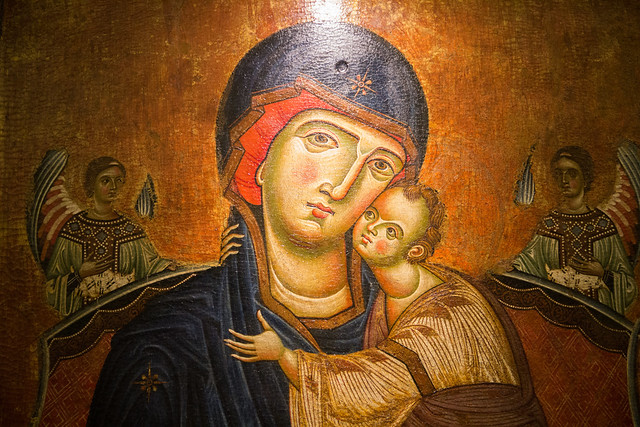
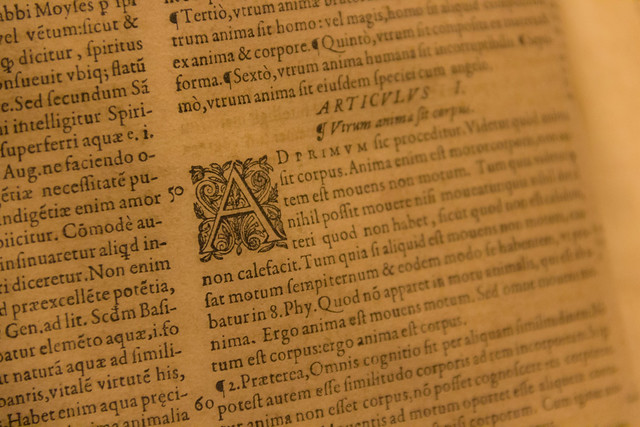
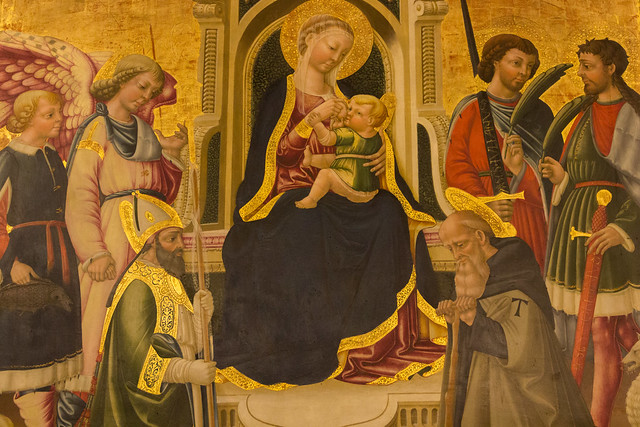

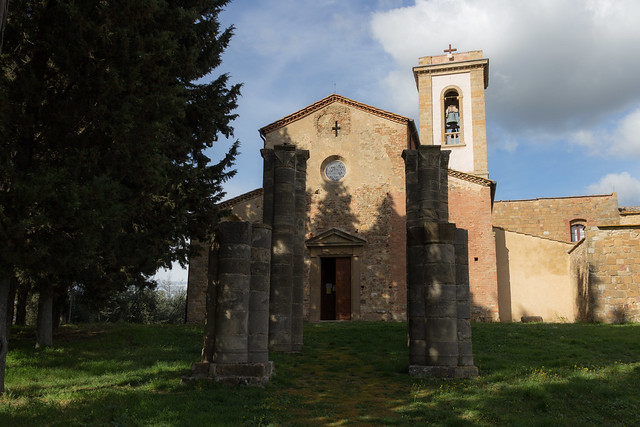
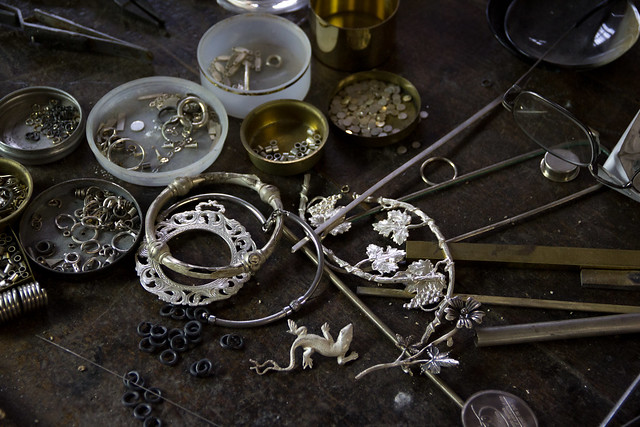
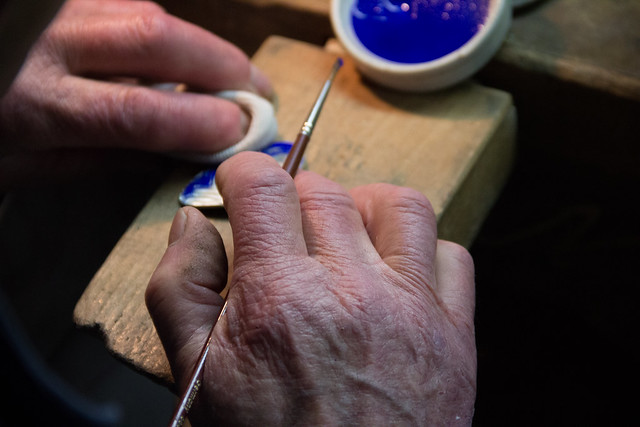

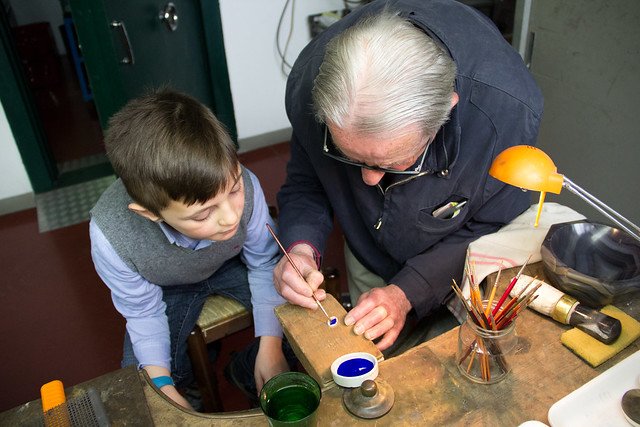

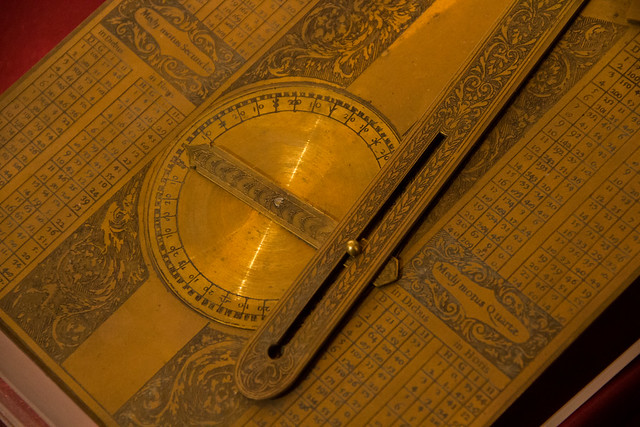
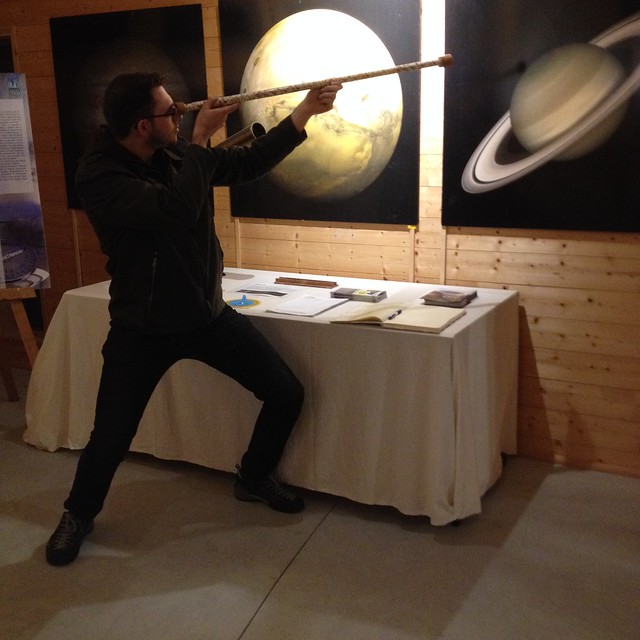

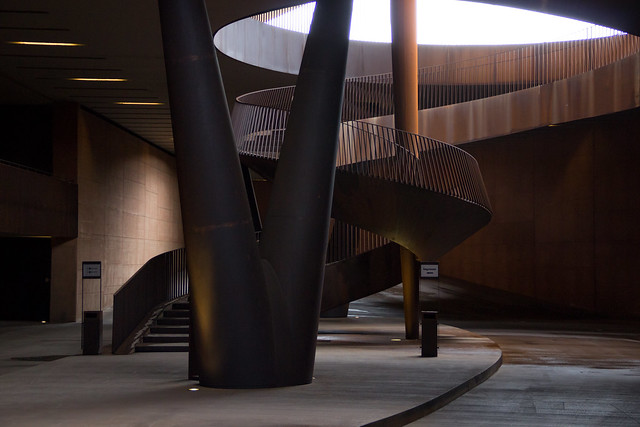
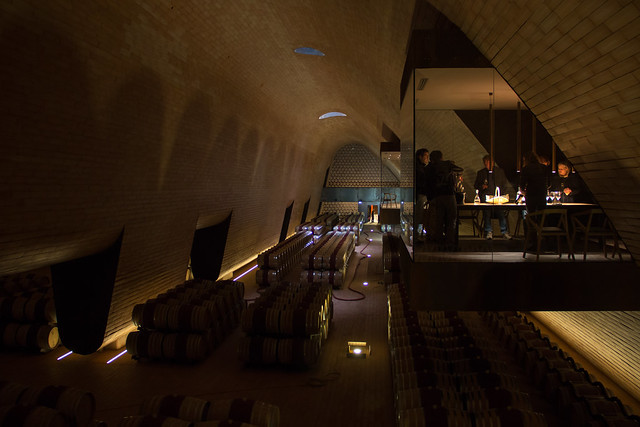
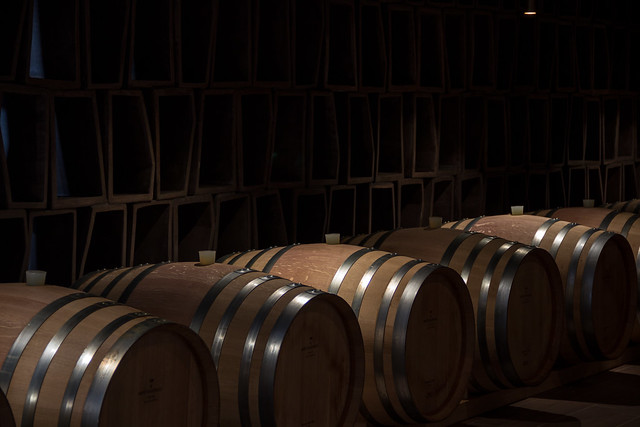
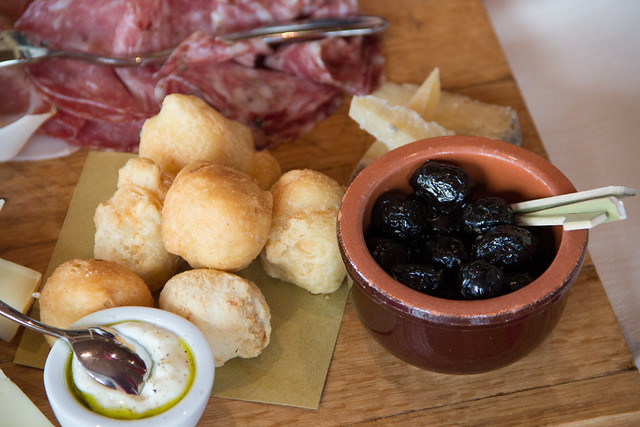
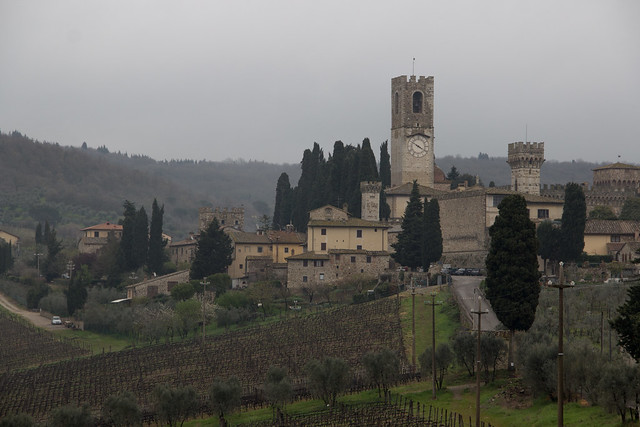
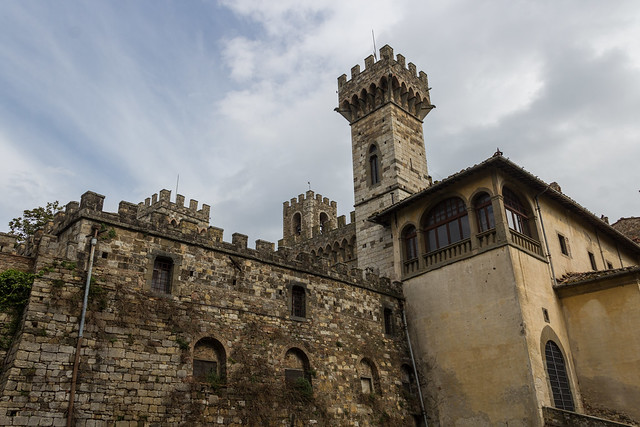


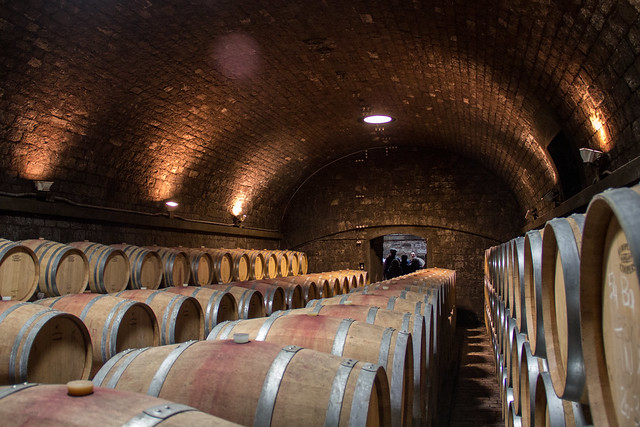
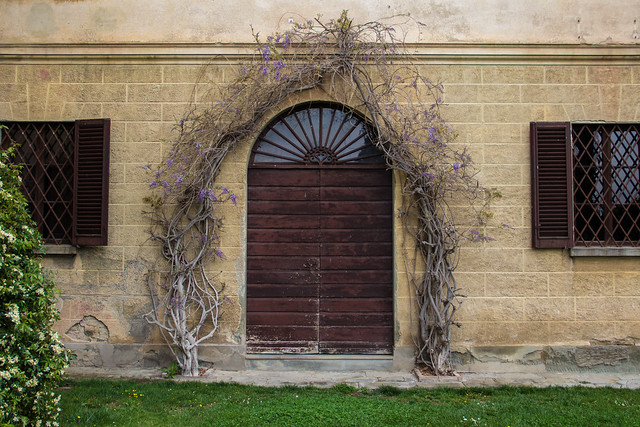
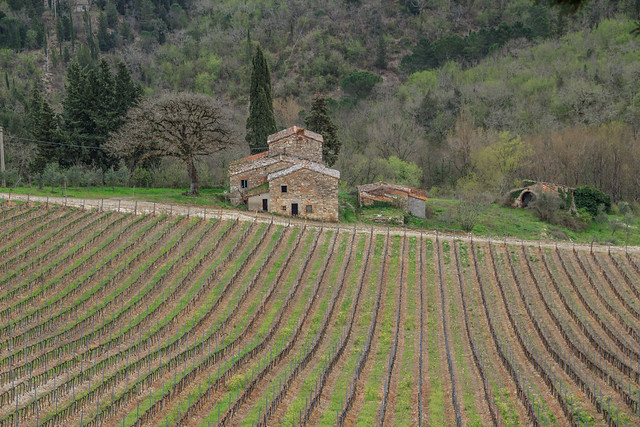
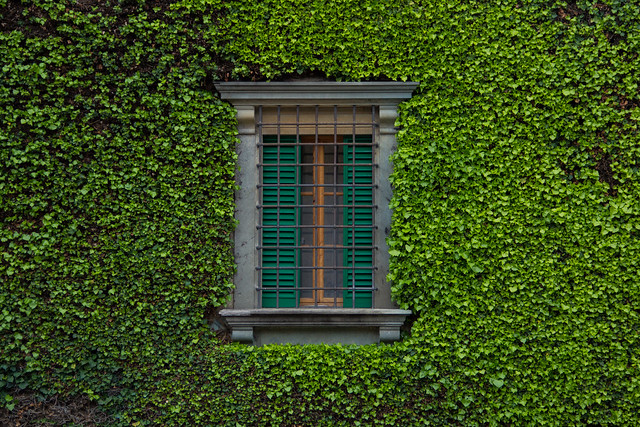
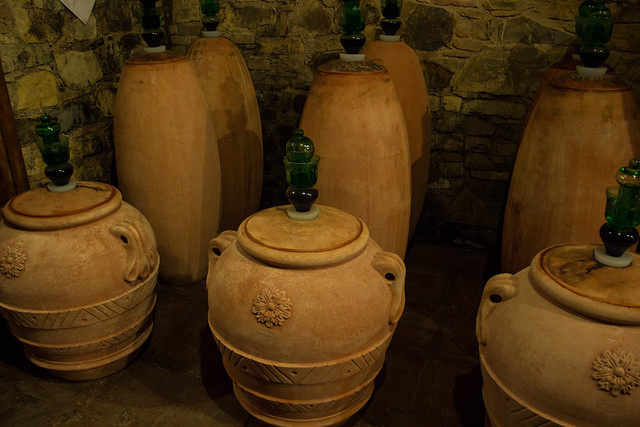
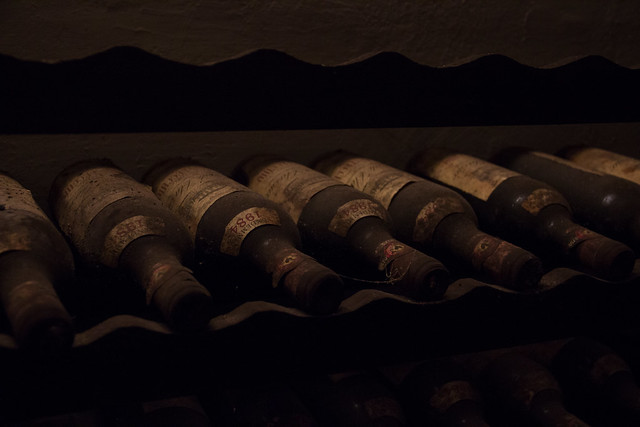
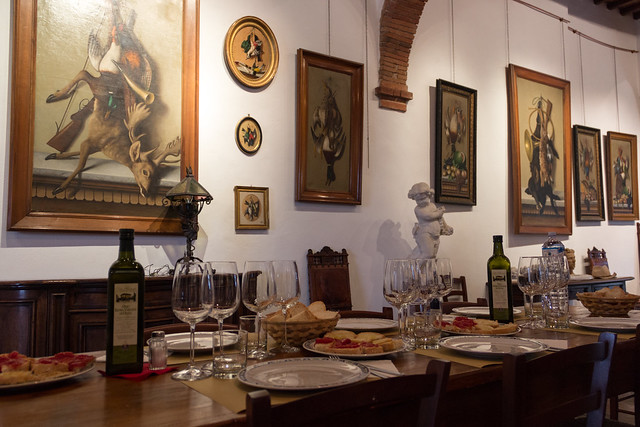
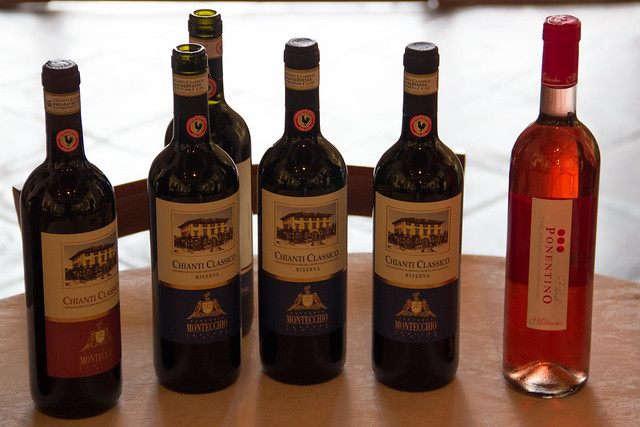
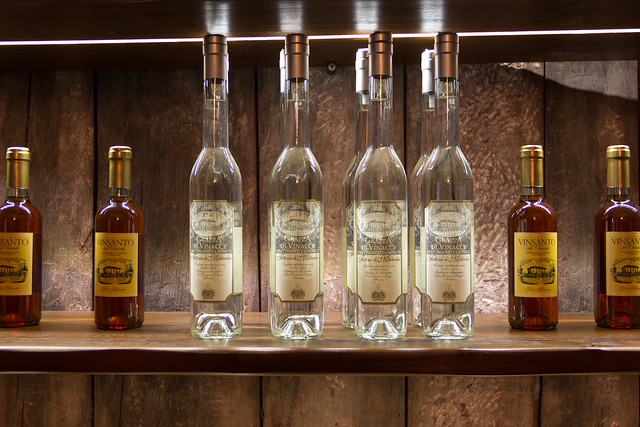
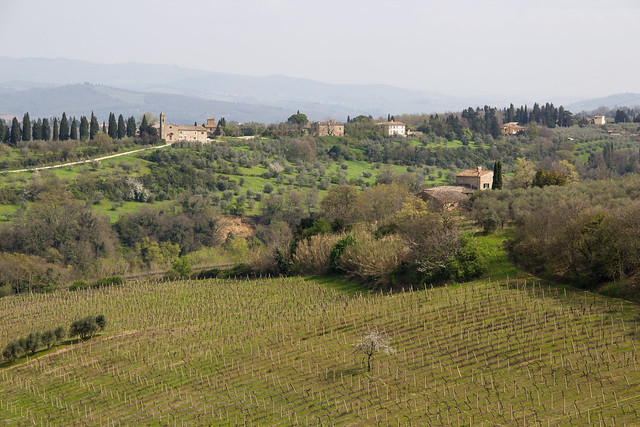
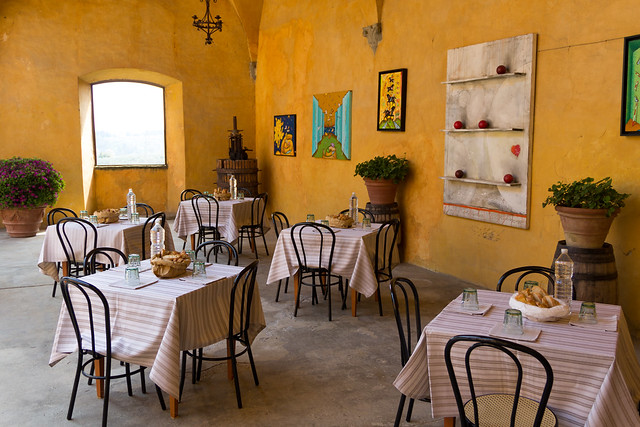
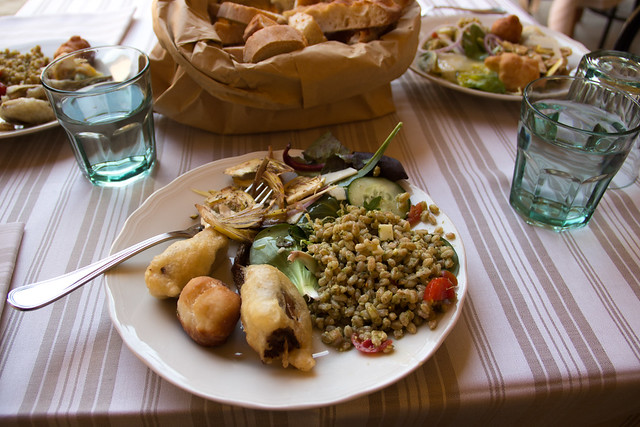

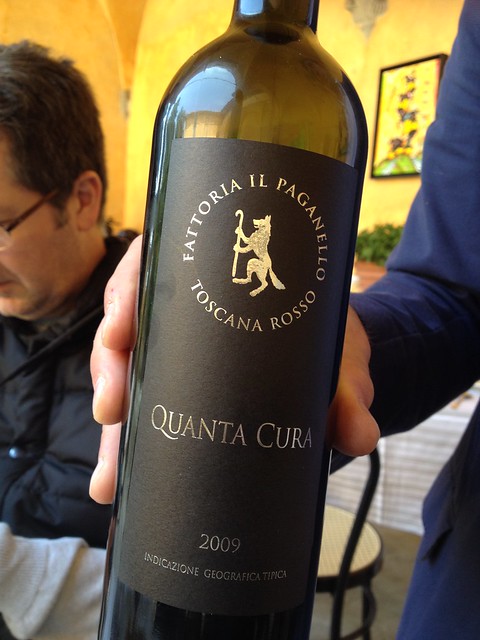
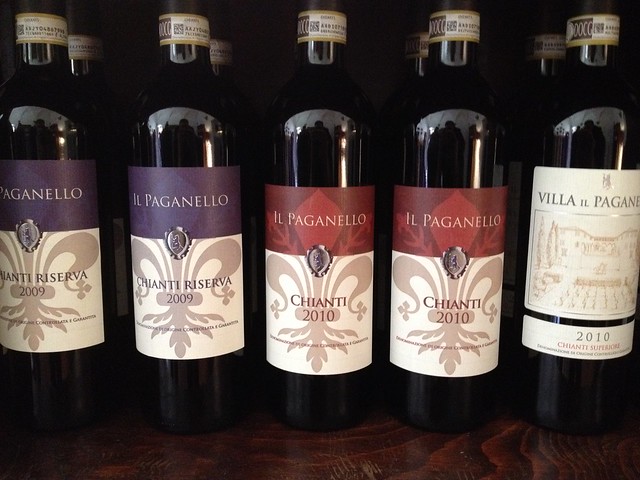
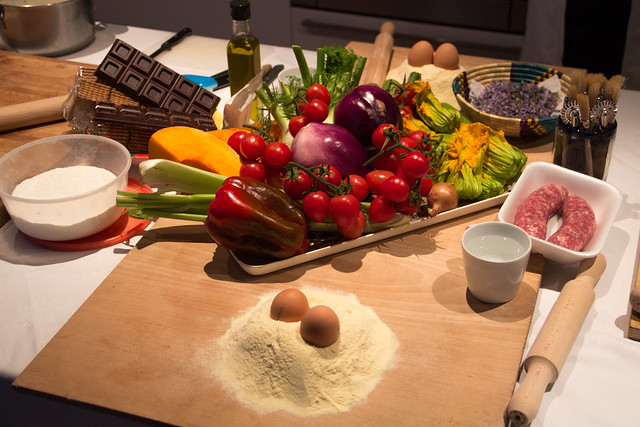
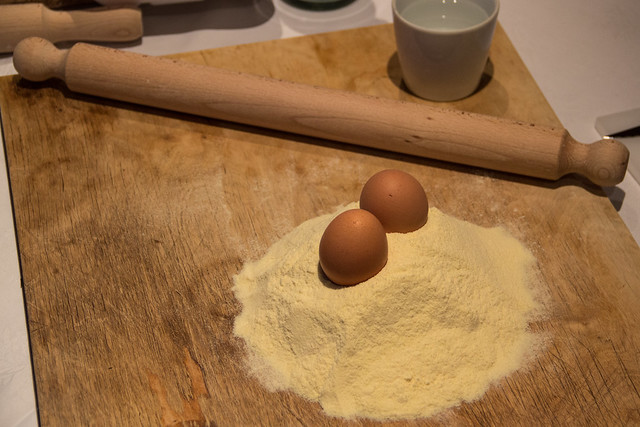

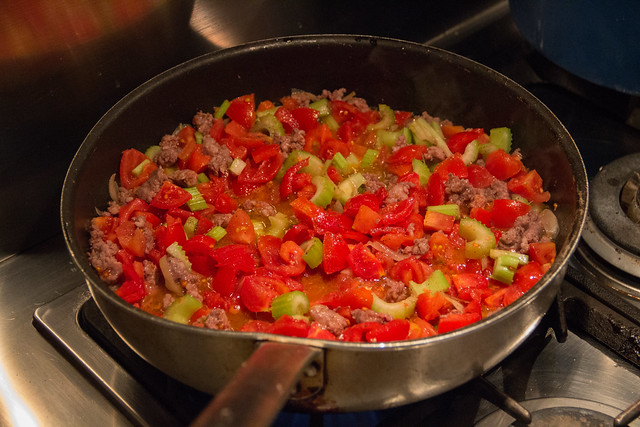
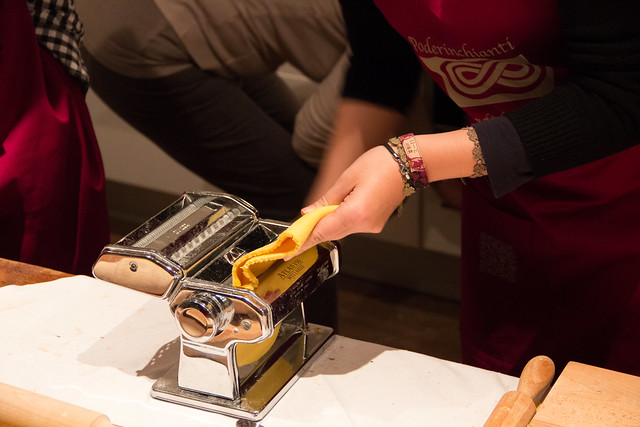

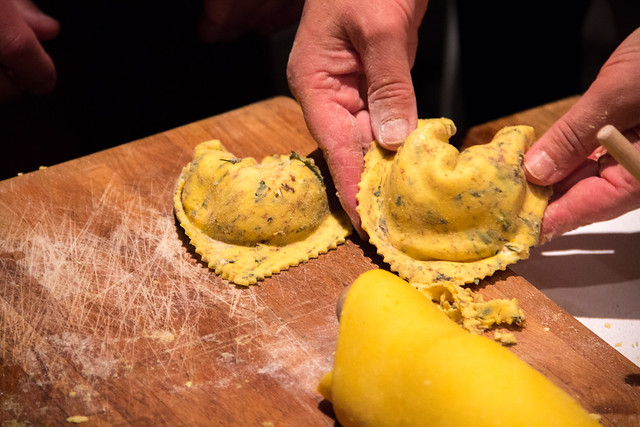
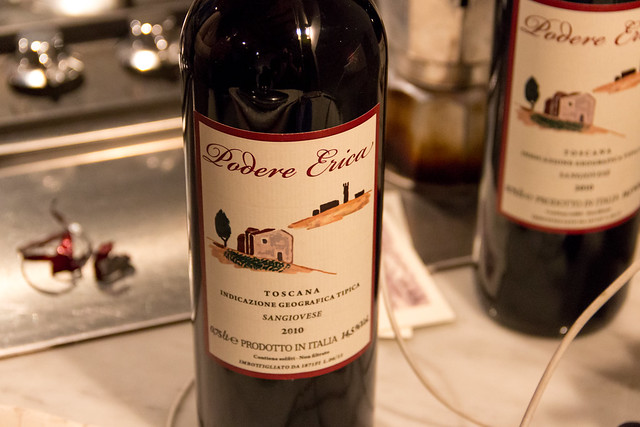

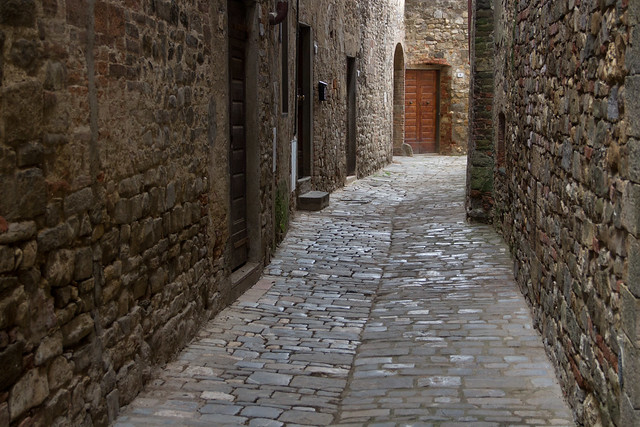
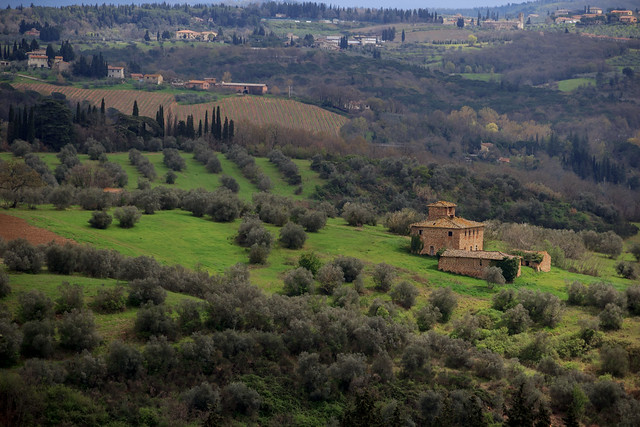

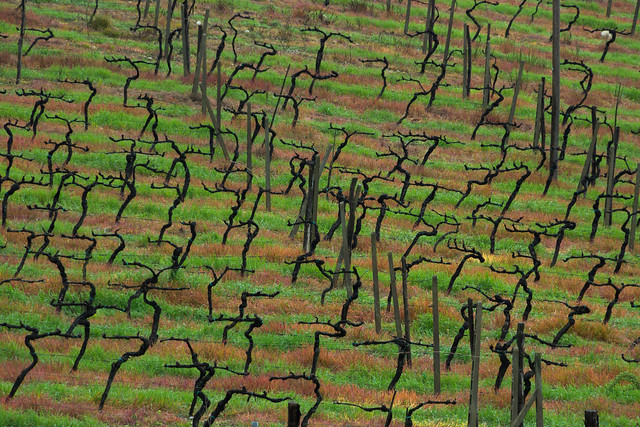
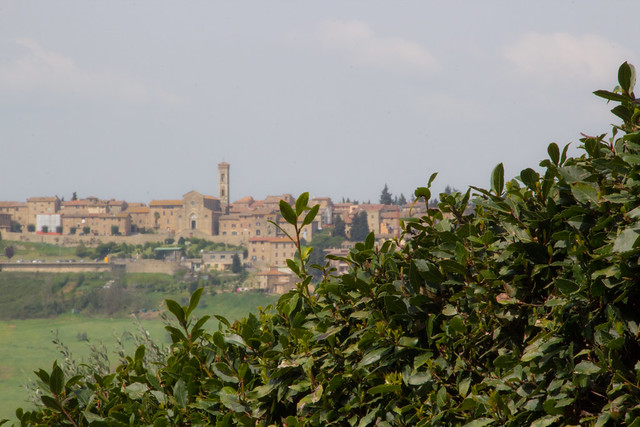
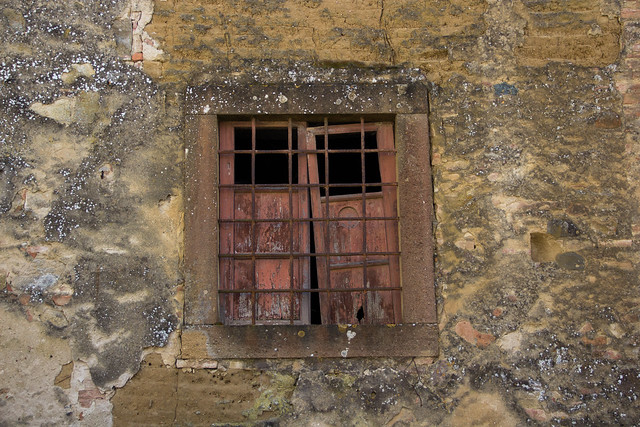
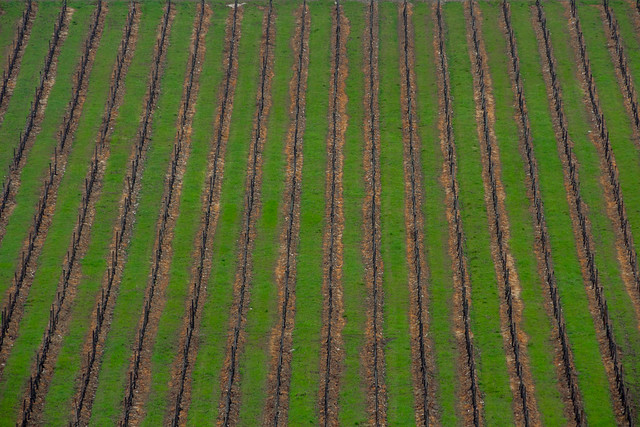
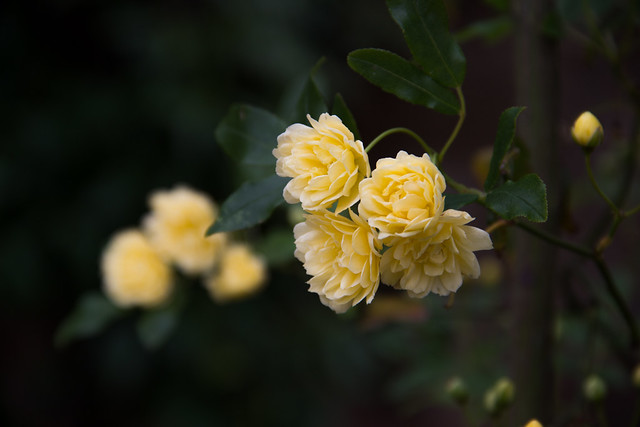
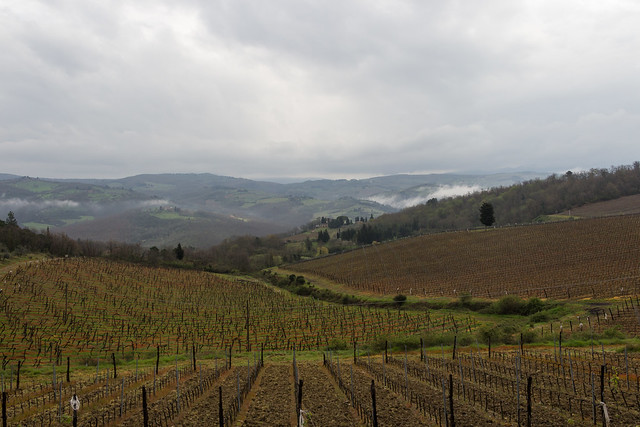
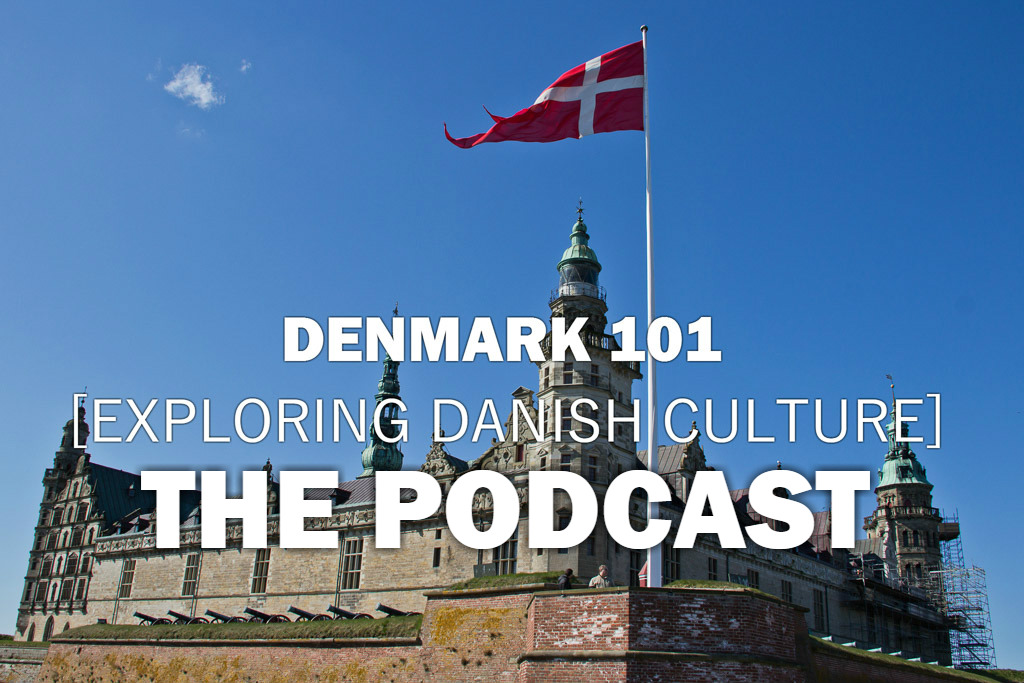
Tavarnelle and the surrounding countryside look absolutely beautiful! I’d love to know how that terracotta-aged wine turns out too!
Thanks Joy! It really was lovely! Road trip to try the wine!
Lovely …….nice pics and good information on wine for wine lovers…..
Thanks Rajasthan =)